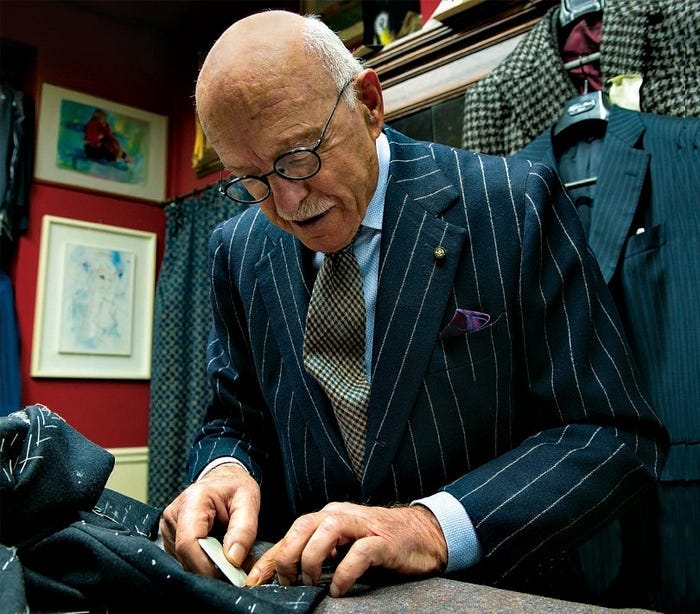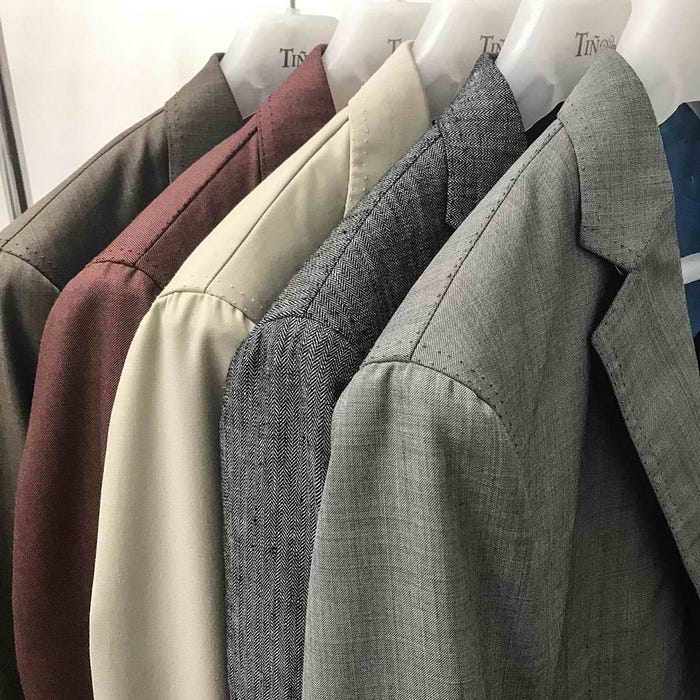by Ben H. Jackson
In 2024, we are living in both the best and worst times for style. On the one hand, we have unprecedented access to every design method and style conceived throughout history. We can explore the secrets of master tailors from the past and merge their expertise with modern technological innovations — from advanced machinery to performance textiles.
On the other hand, we face an increasingly casual culture that rejects formality at almost every turn. It seems that nearly anything goes except for the suit and tie — though this is changing rapidly.
Social media is ablaze with new takes on blazers, suits, and formal wear. Celebrities like Jude Law, Brad Pitt, George Clooney, Jeremy Allen White, Austin Butler, and Jacob Elordi have showcased tailored styles at every opportunity. All these examples are just from the summer of 2024.
While icons like Pitt and Clooney never shy away from classic styles, the social commentary on these pieces stands out. In a world of Balenciaga’s ridiculous look, classic style returns as it should. While they may push what is traditional, this return is undeniable.
Ralph Lauren, a brand not known for getting press, is the talk of fashion week following their elegantly effortless Spring 2024 show in the Hamptons.
With the return of the classic, let us ask: What will be the tailoring style that defines our decade? It will have to be more roomy — gone are the tight suits of the last ten years. Big shoulder pads and stiffness won’t be accepted in a more casual setting.
This brings us to the Neapolitan style. Defined by its often unconstructed look, with softer shoulders, generous lapels, and handwork, it simply looks more natural than the English, Parisian, or American styles.
But what is it really?
In the late 19th and early 20th centuries, Naples became a clothing manufacturing hub. At the time, they didn’t quite have their own style. They mostly used the patterns and methods developed by the English and French. With the affordable labor in the South of Italy, there was an opportunity to truly create a high-quality garment for a fraction of the price.
This all came to a head after Italy’s devastation during WWII. The master tailors in the South found themselves in a tough spot. Industrialization was improving the lives of everyone in the wake of the war, but mass poverty was rampant in the South. There was no economy to speak of after Mussolini’s destruction.
The master tailors of Naples, while the heart of hand-made Italian craft, found themselves without the local customers they had relied on. Yet there were a few men who, in the coming decades, would come to create the Italian style we know today.
In the 1930s, a young man named Vincenzo Attolini came onto the tailoring scene in Naples. He challenged what a suit had to have and deconstructed the English suit. He took the fully lined and canvased stiff English jacket and removed almost all its structure.
In the heat of Naples, this had to be done. He then went on to soften the shoulders by removing a lot of the padding in what is now called the “spalla camicia” shoulder, which has little to no padding at all, almost like a shirt. Vincenzo Attolini’s work was mostly worn by the locals at first but quickly caught on when his work with the House of Rubinacci attracted customers from around the world.
Other things that set the Neapolitan style apart are often seen in suits in recent years.
Patch pockets often found on these jackets make the garment simpler and more casual. Pick stitching (large sections of thread on the lapels and other parts of a jacket that add to the handwork look of the garment).
Puckering of the fabric at seams — often seen at the top of the shoulder — is called “Grinze” and gives the jacket more detail and depth. This is also sometimes referred to as “Mappina,” which means “little rag” in Italian. Trouser pleats are almost always found to give added room and character to the front. Side adjusters, as opposed to belt loops, allow you to go without a belt and add an air of sophistication and differentiation.
The buttons of the jacket opening are often more rounded, armholes are cut high for a range of movement. You will often see more generous, wider lapels that look better and are more timeless than the skinny lapels of the last 15 years.
Overall, beyond the technical differences, the Italian style has an intangible quality that only a hand can impart. Antonio Panico, a prominent tailor in Milan, is featured in the film O’Mast, which explores Neapolitan tailoring, and in Hugo Jacomet’s quintessential book The Italian Gentleman.
Panico explains that the Italian mindset is not mere imitation but transformation and evolution. He notes that even when Italians replicate something, they will inevitably make modifications, adding their personal touch and unique flair. This drive for innovation and individual expression is deeply ingrained in Italian craftsmanship and is a crucial reason why Italian tailoring remains so dynamic and distinctive.
So why will this style dominate the coming years? Simply put, it represents the most relaxed way to wear a suit. Its aesthetic stands in contrast to the athleisure and industrial trends of modern clothing. The handcrafted nature of Italian tailoring offers a level of luxury that industrial clothing brands, such as Suit Supply, have built their reputations on.
The growing popularity of Suitsupply’s casual suit styles is evidence of the prominence of suits that are more relaxed. It also highlights the resurgence of Neapolitan suits, which embody a sophisticated yet casual elegance that is increasingly favored in contemporary fashion.
So, when venturing into modern elegance, consider the Neapolitan style for the next addition to your closet. Even if you can’t fly to Naples for a custom suit, countless brands are now making strides with quality craftsmanship in this style at a more accessible price range.
Of course, aspects of this Italian hand-made look can be somewhat replicated, but credit must go to the master tailors of Napoli for pioneering the look of the 21st-century suit. The good news is you now have options.
From the style’s inventors, Rubinacci, who has shops in Italy, the UK, and the US, to Pini Palma, based in Naples, which provides an affordable product with Italian handwork. Then there is, of course, the easily accessible Suit Supply, with stores all over the world. Whatever stage you are at, there is an option for you.








